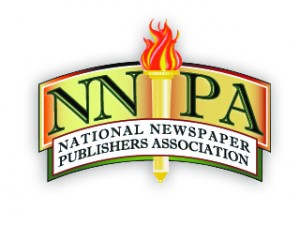(ThyBlackMan.com) The National Association for the Advancement of Colored People (NAACP) was founded in 1909 in New York City by a group of bi-racial activists. Originally called the National Negro Committee, it is considered the nation’s oldest civil rights organization. Its initial goal was to make white people aware of the need for racial equality. The organization launched a program of speechmaking, lobbying, and publicizing the issue of racial discrimination and inequality in housing, education, employment, voting, and transportation. These messages were disseminated nationally, primarily through Black newspapers and the Black churches.
The National Newspaper Publishers Association (NNPA) was founded in 1940 when John H. Sengstacke, publisher of the Chicago Defender organized a meeting with other African American publishers that was designed for, as  Sengstacke said, ”Harmonizing our energies in a common purpose for the benefit of Negro journalism.” And so, the group decided to form the National Newspapers Publishers Association.
Sengstacke said, ”Harmonizing our energies in a common purpose for the benefit of Negro journalism.” And so, the group decided to form the National Newspapers Publishers Association.
Under the guidance of its current chairman, Danny Bakewell, the NNPA boasts a membership of over 200 Black newspapers throughout the United States and the Virgin Islands. Their combined national readership is some 15 million, and when combined with active websites, the organization’s international reach is significant.
Both these organizations were created to fight racial injustices and discrimination against Black people in America.
The Crisis is the official magazine of the NAACP. It was founded by W. E. B. Du Bois in 1910. Du Bois proclaimed his intentions in his first editorial saying, “The objective of this publication is to set forth those facts and arguments which show the danger of race prejudice, particularly as manifested today toward colored people.
When the Crisis was established in 1910, there were several Black newspapers, actively fighting racial discrimination and racial injustices. The Chicago Defender was six (6) years old, and feverishly fighting the battle for equal justice. The Cleveland Gazette, published in Cleveland, Ohio was 27 years old and anxiously fighting the same battle. The Dallas Express published in Dallas, Texas was 18 years old; it was vehemently fighting against racial in-justice. The Norfolk Journal & Guide was 10 years old; the Philadelphia Tribune was 26 years old; the Pittsburgh Courier was 3 years old; and the Washington Afro American was 18 years old. These newspapers agitated the senses; they were persistent and unrelenting, as they were zealous to the cause.
These Black newspapers and– many others, as well as the Black churches and their leaders were in the forefront of the civil rights struggle and the establishment of the NAACP and the Crisis magazine was a welcome addition to the embattled garrisons.
NNPA newspapers still lead the charge today. As the Crisis is a quarterly magazine, daily news of racial injustices and the battles being fought by the NAACP are only reported to the Black community on a regular basis through Black churches and the Black Press. The daily press (non-black media) simply does not find ongoing NAACP activities “newsworthy.”
There is no other media that positively profiles the accomplishments of the NAACP like the Black Press. There is never a week in the black publishing arena, that some Black newspapers are not heralding the efforts of the NAACP and its leaders. Undoubtedly, some daily newspapers mention the NAACP, but not with any frequency, unless they are reporting on their latest scandals.
The NNPA and its member publishers take issue with the days leading up to the NAACP’s 2011 Image Awards. Prior to the March 5th 2011 annual event, advertisements were placed in several of the major daily newspapers (non-black newspapers) in various cities in the US. Upon seeing these ads, Black newspaper publishers around the country were shocked because not one Black newspaper was used to place their ads, and not one publisher, including the Chairman of NNPA was contacted about their advertising campaign.
That same weekend many Black newspapers– as good will– carried full page stories and pictures relating to the up-coming Image Awards, totally unaware that they had been taken advantage of, forsaken, overlooked and taken for granted, knowing that Black newspapers would surely run their info.
Following some conference calls and exchanged emails with publishes and Black media outlets, a consensus was formed that Black media worldwide should refrain from coverage of all NAACP events and of its leaders until NNPA Chairman Bakewell, meets with NAACP leaders, and resolves this issue. For the record, a simple apology WILL NOT FIX IT!
All publishers nationwide are asked to check in daily newspapers (non-Black) for the 5th, 6th and 7th of March, 2011 to see how much coverage was reported on the awards event, pre and post, and to report their findings to the Chairman at Black Press Week in Washington DC.
Black publishers worldwide are urged to refrain from printing anything further about NAACP events or personalities until this issue is resolved. Black Ministers are urged to address this issue from their pulpits nationwide.
It is a fact that our leaders thrive on the work that the Black press does in heralding their accomplishments and achievements. Most often, it is the only media outlet available to them. It is the Black press and the Black church that create positive images for all our organizations, including the personalities that run them. Without the support of the Black press and the Black church, most Blacks in high positions in corporate America would be unknowns and soon bygones. Most keep their jobs because the Black Press makes them important and relevant to corporate America, as they appear to be their link to the Black consumer.
We credit our leaders of the NAACP with good sound judgment and common sense at least. What were they thinking when this decision was made? Who were they trying to attract, and or who were they trying to impress?
Stay tuned, there’s much more to come.
Written By Walter Smith
















The NAACP is SOOOOO obsolete in black American life in 2011,it’s pathetic.
The folk who fought and died for the civil rights,political and economic improvements African Americans enjoy today are either deceased or VERY OLD,no new leadership has emerged to replace them,and what exists attempt to use the tactics of the 50’s and 60’s to fight today’s struggles,and the atavistic tools will be insufficient to meet today’s challenges for African Americans.